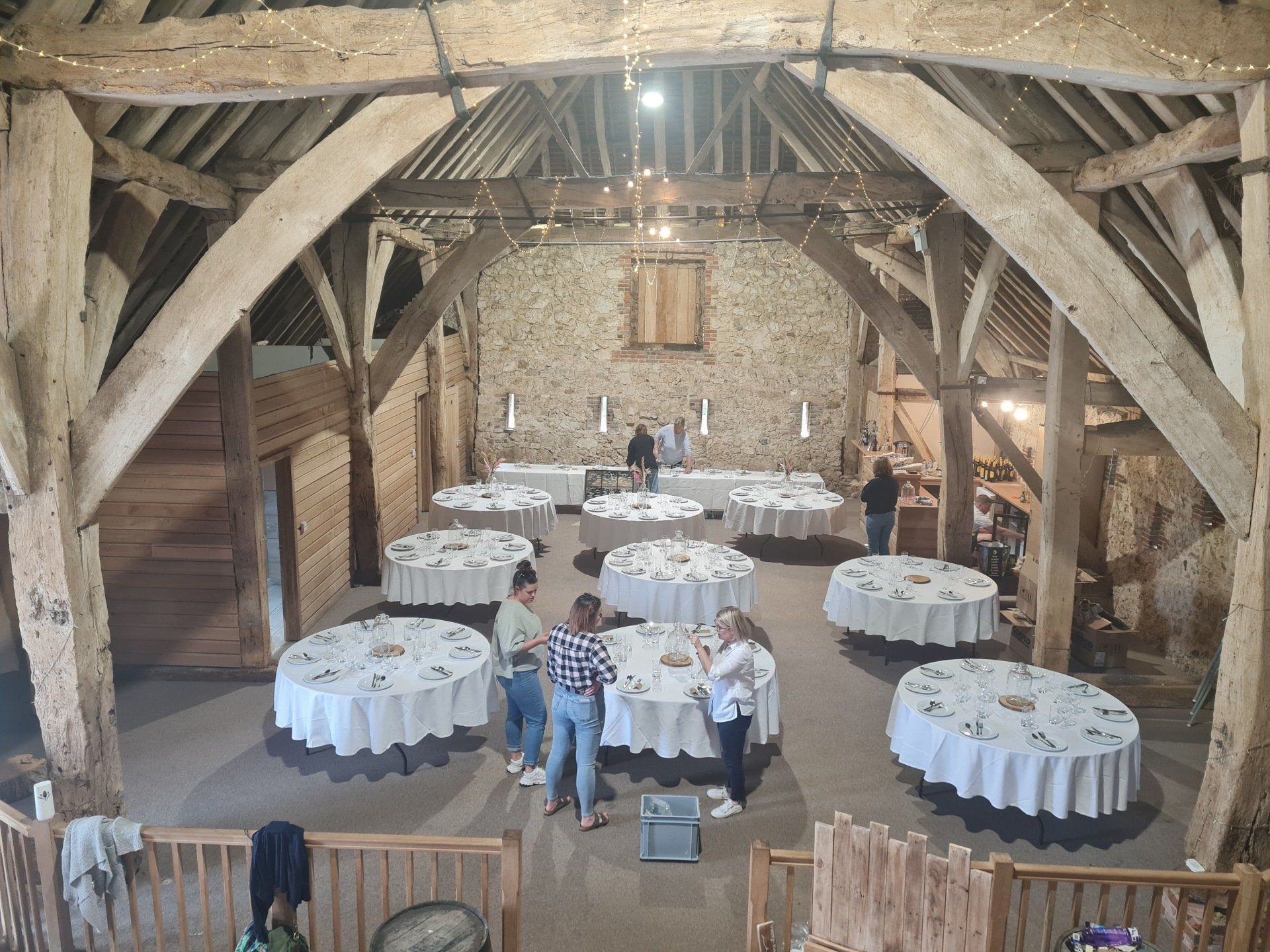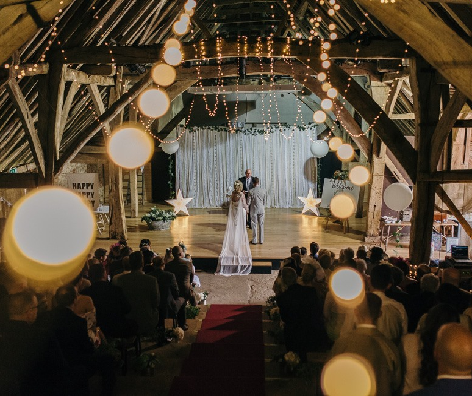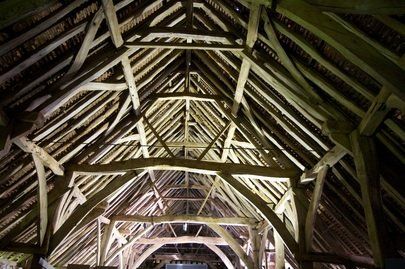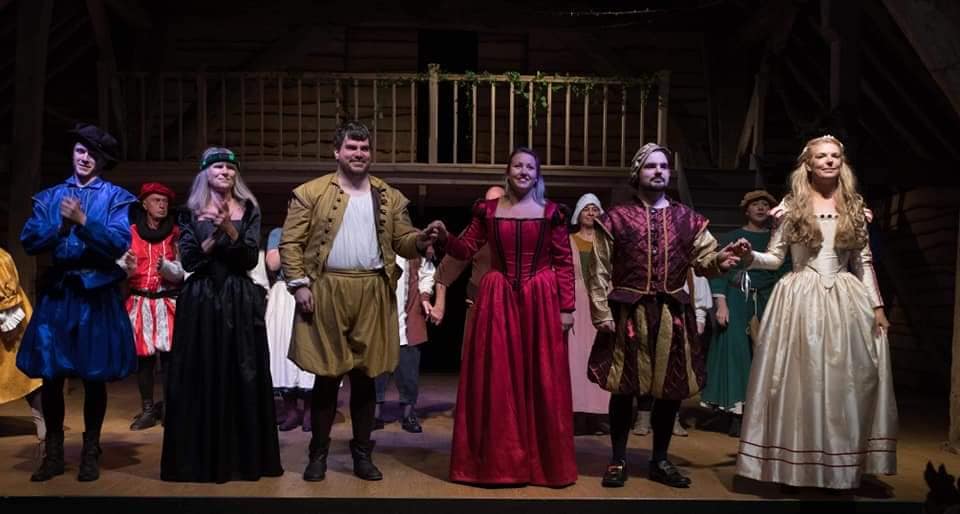The
Great Barn
Titchfield is extremely fortunate to have a considerable number of historic buildings within the original Parish, or Hundred, and one of the most significant is the Great Barn. It is the largest in Hampshire and one of the largest in England, and was built between the years 1408 to 1411 on land belonging to the nearby Abbey, and came under the jurisdiction of the Abbot.
It is in a truly magnificent state of preservation, thanks to the efforts of recent owners, and exhibits a level of craftsmanship far beyond the normal, for that period in history. There are a number of unusual and significant features, particularly the ‘cruck-like’ braces under the stub tie beams seen on every alternate trusses and the arrangement of the king posts, in the apex of the roof, and their longitudinal braces. All of the walls would have been, originally, similar to the eastern and northern walls, with timber framing, and weather boards, on a flint-stone base. It is thought that some of the northern wall is original. The southern and western walls were replaced by stone and brick during one of the periods of major changes which took place to the structure of the Abbey/Place House, when there would have been plenty of stone available. The two porches in the east wall were added some 150 years after the original building was erected.
THE GREAT BARN IS A POPULAR WEDDING & EVENTS VENUE FOR MORE INFORMATION PLEASE CLICK HERE
However, that did not explain why the largest barn in Hampshire was built. The Abbey came under the jurisdiction of the Bishops of Winchester, who represented the King and continued to be responsible to the King for the land that he had granted to the original monks at Titchfield. Who was the Bishop of Winchester in 1410? It was Henry Beaufort, who was uncle to Prince Henry, the future Henry V, his tutor and best friend, Chancellor of all England and one of the County’s richest men. He helped to finance the continuation of the Hundred Years War under Henry V, and it is a very plausible concept that he, and Prince Henry, in 1408/10, during their planning to claim the French throne, conceived the notion of building a Great Barn for the storage of victuals etc. Titchfield, with its port and proximity to Southampton, was an obvious choice. This would explain where the finance came from.
Bishop Beaufort went on to become Cardinal Beaufort, was a loyal supporter of Henry VI (Henry V’s son), was instrumental in finding the King a wife (Margaret of Anjou), is reported as having attended the wedding ceremony in Titchfield Abbey in 1445 and died in his bed in Shakespeare’s Henry VI Part II.
Remember, you read it here first.






